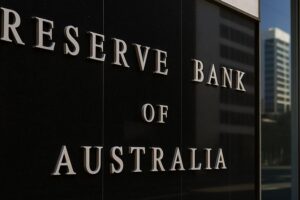Virgin Australia (ASX:VGN): So far so good since relisting, but what does the rest of FY26 hold?
![]() Nick Sundich, September 17, 2025
Nick Sundich, September 17, 2025
Nearly 3 months since Virgin Australia (ASX:VGN) made its re-entrance to the ASX, there’s little to complain about (unless you were one of those investors who got wiped out in 2020 when it went into administration and was bought by Bain Capital).
Despite analyst warnings about private equity IPOs, the mantra you should ‘never buy an airline‘, macro headwinds, competition with Qantas and the IPO market since late 2021…Virgin shares are over 10% higher since first listing, it was promoted to the ASX 300 in the first possible opportunity post-listing, and its FY26 results were nothing to be snuffed at.
But what next for the second largest airline in Australia?
What are the Best ASX Stocks to invest in right now?
Check our buy/sell tips
Virgin Australia’s (ASX:VGN) current stint is its second
Virgin Australia’s current tenure is its second on the ASX. And some AV Geeks (aviation geeks) call the airline Virgin Mk 4.0 because it has been through various ‘variations’ in its history. Virgin 1.0 was the airline 2000 to 2011 when former Qantas executive John Borghetti became the boss.
The airline launched in 2000 with just one aircraft at behest of Richard Branson’s Virgin Group and entrepreneur Brett Godfrey. It was the 2001 collapse of Ansett that let Virgin take the mantle of Australia’s number two carrier. Branson brought the Virgin brand values: innovation, cheeky marketing, customer service, and cost-competitiveness. Branson was also the public face, frequently promoting the airline in Australia with publicity stunts and media appearances.
In 2011, Borghetti became CEO and he wanted Virgin to become a competitor to Qantas so rebranded it to Virgin Australia and moved to a full-service airline. This came at a cost but did not derive the revenue anticipated because of how Qantas responded (i.e. by hiking capacity to the point where it even flew 747s on flights from the East Coast to Perth).
Borghetti left in 2018 and was replaced by Paul Scurrah and he sought to bring Virgin Australia to financial sustainability (Virgin 3.0). By this point Branson’s Virgin Group only had ~10% of Virgin Australia as it had sold stakes to many other airlines (Etihad and Singapore for instance). The idea was that these airlines could provide Virgin with a kind of alliance without being in a formal airline alliance (i.e. like Qantas’ oneworld or the Star Alliance).
Rising from the ashes
Things looked to be slowly getting better for Virgin Australia, until the pandemic struck and Virgin Australia entered voluntary administration. It was bought be US private equity firm Bain Capital which made changes including making it a domestic only airline and having just one aircraft type (737s).
The plan was always to sell it off, either to the ASX or another private equity firm. Sadly, everyone who held Virgin shares prior to the administration (retail investors and airlines alike) ended up being ‘wiped out’ and could do nothing but take tax losses.
Jayne Hrdlicka – ex-boss of Jetstar – became CEO and she gradually took Virgin Australia back to profitability (achieved by FY23). Qatar took a 25% stake and the pair of airlines reached a deal to ‘wet lease’ flights between Sydney and Doha. Despite her success, she departed the company and was replaced by Dave Emerson. Bain realised its long-awaited ambitions to re-float Virgin shares and took the opportunity to cash some out, but retained a reasonable stake.
Virgin Australia had positive FY25 results
Virgin Australia recorded a $331m underlying profit, up 28% from the year before, although its statutory profit was down 12% (albeit at $479m) due to IPO costs and the benefit of future flight credits recognised in FY24 and not repeated in FY25.
Virgin Australia’s EBIT was $650m, up 30% and an 11.2% margin, and its revenue was $5.8bn (up 8.5%). Its Net Debt to Pro forma underlying EBITDA was 1.1x, at the low end of its target range. Importantly, all these results were in line with prospectus forecasts. As Collins Foods would tell you, missing your first prospectus forecasts is a cardinal sin that investors do not easily forgive. But…Virgin Australia passed the test, for now.
What next?
You could argue Virgin Australia is more compelling with Qantas as it is now profitable and will lack the capex Qantas will as it replaces its fleet. Virgin’s Velocity program has been going strong too in terms of earnings generated, partners won and members kept. This segment made a 28% EBIT margin, which is slightly better than Qantas ironically which is in the mid 20s. Virgin is slowly bringing in more 737s, following a leasing model.
While Virgin Australia warned Trump’s tariffs may impact fuel prices and foreign exchange rates, it guided to growth in revenue and underlying profit in FY26 without being any more specific. It did warn labour and staff-related costs as well as airport and maintenance costs would grow above inflation, but air travel demand would grow in line with GDP growth and fuel costs would be managed through its hedging program.
Virgin Australia estimated it would rack up $1.1bn in capex, but it would be $900m in net terms after net proceeds from pre-committed sale and leasebacks of new aircraft. It guided to double digit growth in the Velocity segment.
Analysts covering Virgin have a $3.70 median share price, up 15% from the current price and 27% from its IPO price. They call for $6.2bn revenue (up 7%) and for $1.2bn EBITDA (up 6%). Then in FY27, $6.5bn revenue (up 4%) and $1.3bn EBITDA (up 9%). Its multiples are 2.9x EV/EBITDA, 6.5x P/E and 0.5x PEG. For comparison’s sake, Qantas is 4.3x EV/EBITDA, 9.5x P/E and 0.77x but it is expecting 7.5% revenue growth and 15% EBITDA growth as well as a slightly higher 20.5% margin.
Conclusion
Virgin Australia won’t be going into administration again anytime soon barring a major crisis. It will likely continue to grow its revenue and earning, but will always be a tier below Qantas and you don’t want to invest in a company that’ll always be the ‘runner up’ in the market, even if it is part of a monopoly.
So even though we could be proven wrong in a few months time…we’d still avoid investing in Virgin for now.
Blog Categories
Get Our Top 5 ASX Stocks for FY26
Recent Posts
China Stimulus Hope Fades: What It Means for ASX Iron Ore Giants
The Australian mining sector, particularly the iron ore giants, is undergoing a period of uncertainty, marked by the fading hopes…
RBA Holds at 3.60%: The November Cut That Isn’t Coming
The Reserve Bank of Australia (RBA) recently announced it was holding its cash rate at 3.60%, putting to rest widespread…
When Ray Dalio Talks, Investors Listen! Here’s His Latest Advice For Investors!
As one of the world’s most famous and successful investors, Ray Dalio’s words are always taken notice of by the…



